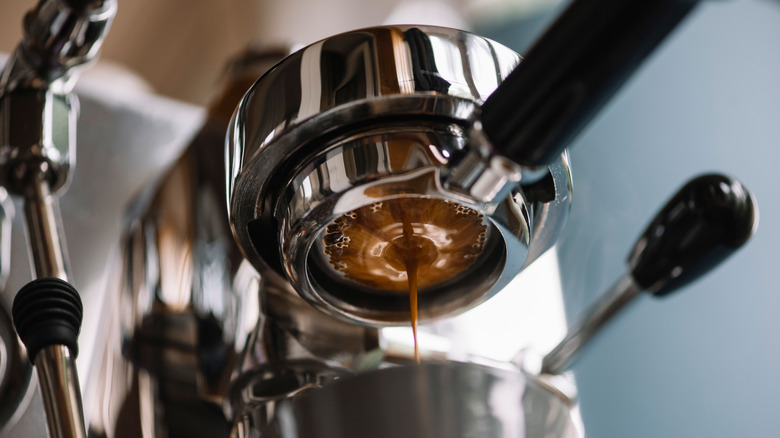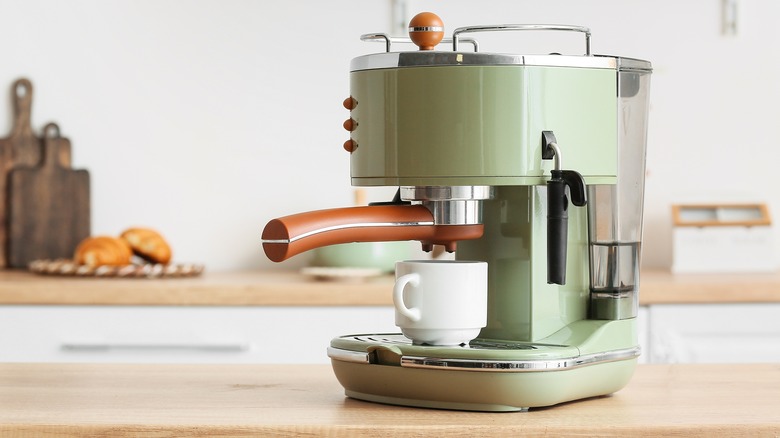What The Brew Group Is On Your Espresso Machine
How well do you really know your espresso machine? If you're looking to get the best-tasting shots out of it — as well as keep your machine in good condition — it's worth knowing more about it works. If you've never given much thought to it beyond where you put the beans and which buttons you need to push to get your espresso in the morning, you might want to pay closer attention to the parts of the machine where the brewing magic happens — including the brew group.
Also called the group head or the group, the brew group is an essential mechanism present in every espresso machine. It's the last stop in the brewing process, where water meets coffee to produce the shot of espresso; by extension, it's arguably the most sensitive and important part when it comes to quality control. The slightest variances in heat and pressure can make or break an espresso shot, after all, and the brew group is where both factors come into play most significantly.
That's why understanding which brew group you have on your home espresso machine is key to consistently pulling the best espresso shots possible. While brew groups vary greatly in appearance, you can usually identify it as the unit that dispenses the water into your portafilter basket. How quickly and evenly the group heats up, how stable the heat retention is, and how much control it gives you over the water pressure are the key characteristics of any brew group that define its pros, cons, and price point.
The major kinds of brew groups vary in price and ease of use
A simple search of "brew group" on the internet will most likely turn up tons of results about the E61 group first and foremost. Invented in 1961, this group head revolutionized espresso machines and is still used in modern units to this day; many commercial-grade machines use either the E61 or a derivative. With its long history, it's a reliable model that always has compatible parts and replacements available on the market, as well as a wealth of knowledge on how to use and maintain them.
However, any single-group unit with the E61 runs in the thousands of dollars and can be hard to find, so the most common type of group you'll find in popular home espresso machines is actually the saturated or semi-saturated group. It's a modern design that some espresso experts argue is better than the E61 in every way but aesthetics. Saturated groups enjoy a much faster heat-up time and stable heat retention due to being welded to the boiler itself. Semi-saturated groups are separated from the inner mechanisms by a heat transfer device and are slower to heat up; however, due to their detachable nature, they're much easier to clean and maintain on a regular basis. The downside of the much more affordable saturated and semi-saturated groups is that the models can vary greatly between manufacturers, and you'll have to do your research to make sure you're taking care of your machine properly.

